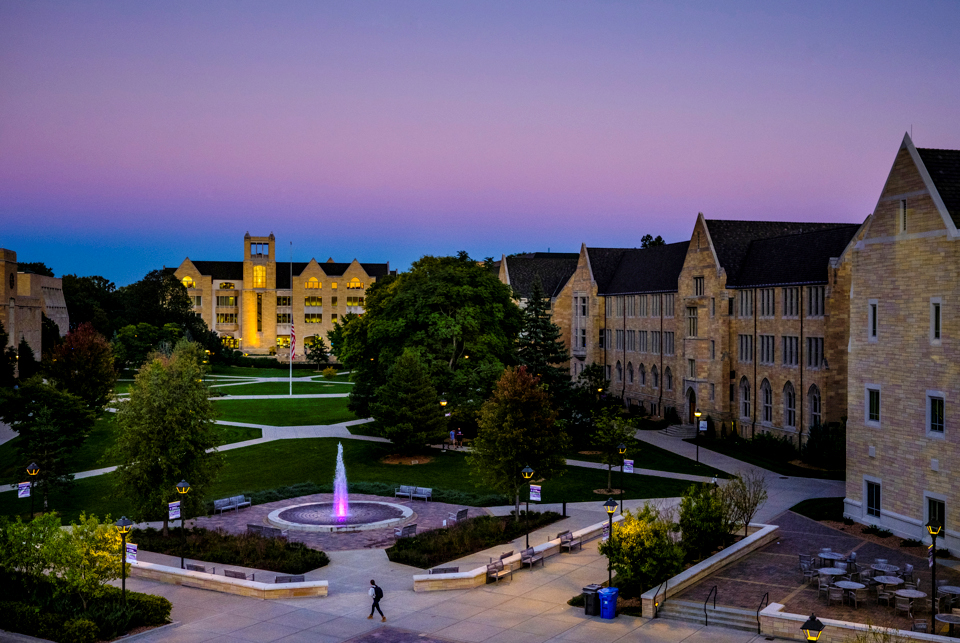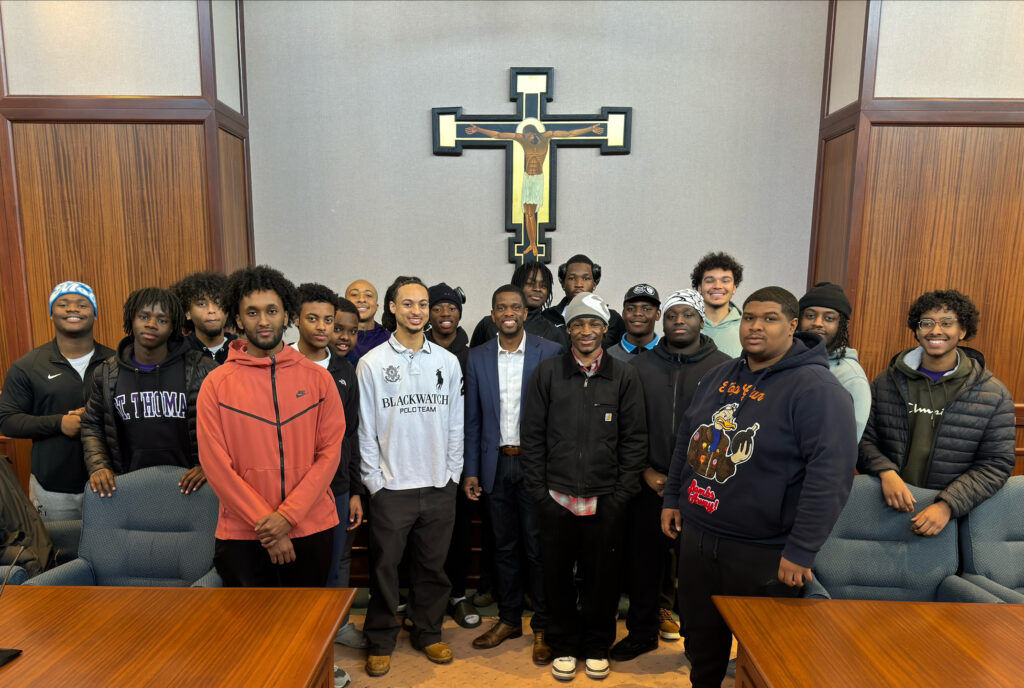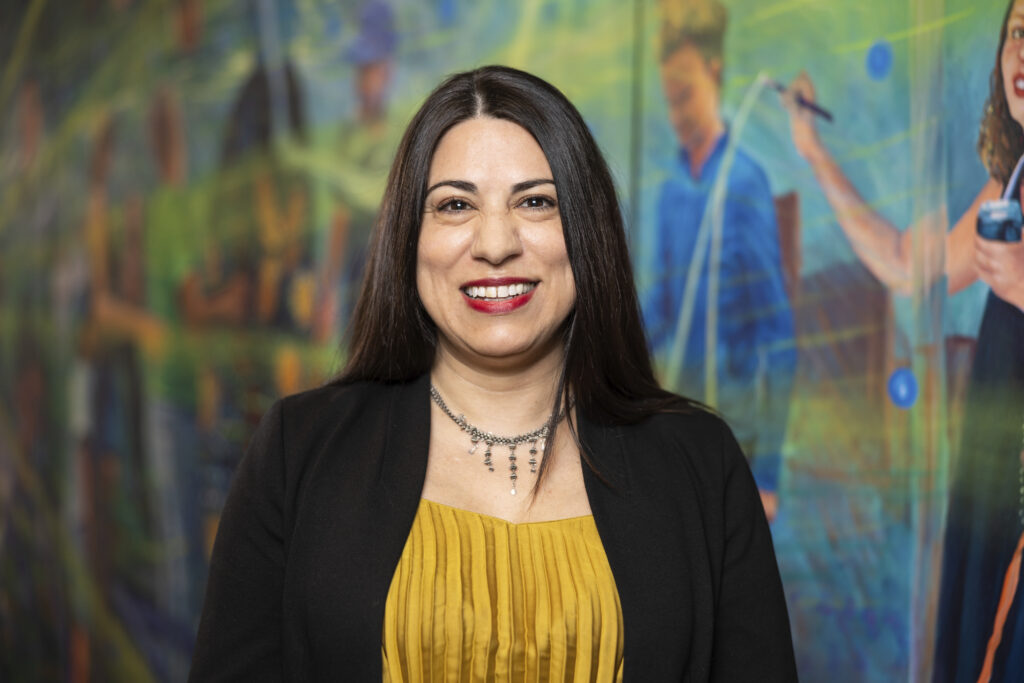Hundreds of students, faculty and staff filled the OEC auditorium on Tuesday for the first College of Arts and Sciences Teach-in Tuesday event.
The hourlong discussion focused on the research of Mamie Phipps Clark and her husband, Kenneth Clark, and led to a dialogue with audience members.
“These [teach-ins] were devices that were utilized during the civil rights movement. … I wanted to leverage the immense intellectual capacity we have in the college,” said CAS Dean Yohuru Williams, PhD. “We will spend this year focused on issues of racial inequality. … We want these events to be opportunities for the community as a whole to come together around a range of issues.”
Mamie Phipps Clark's original 1940's research about self-concept development in African-American children was instrumental in making legal arguments against racial segregation in American schools, which led to the 1954 Brown v. Board of Education ruling by the Supreme Court declaring public school segregation unconstitutional. Psychology professor and associate vice provost for faculty advancement Ann Johnson, PhD, spoke about the historic “doll studies,” in which black children were shown two dolls, one white with yellow hair and the other brown with black hair. Asking a series of questions about the dolls, the researchers showed that black children showed a strong preference for the white dolls; this pattern was even stronger for children from segregated schools.
“This is thought to be the first instance of social science influencing policy in a significant way,” Johnson said. “Her work was meaningful, had a lasting impact, and I believe every psychology student should know about the life and work of Mamie Phipps Clark.”
“Children are often the target, which I find interesting and sad, of racial and social engineering projects,” Johnson said. “A lot of the early 20th century scientific thinking about children was framed by eugenics and racist assumptions. Now we refer to that period of time as the age of scientific racism.”
Williams and Johnson both answered questions from audience members, with Williams putting the conversation into different frames of both historical contexts and contemporary society. One of the first student questions was directed at a slide Johnson had shown that featured an “It’s OK to be white” poster, and asked how to speak with people about why that phrase is problematic.
“In our society, historically, whenever we’ve had these moments of pushing the boundaries of defining citizenship … it has provided opportunity for people to expand their identity and take away from the identity formation of others,” Williams said, explaining that the language fits into a historical legacy that creates more meaning than just the words themselves. “It’s all about how 'I feel threatened by you having access to what was previously denied you.' During Reconstruction (after the Civil War), you had the equivalent of ‘it’s OK to be white’ in the South. [The thinking was] 'Now that slaves are free, what does it mean for me as a white citizen?' … As you look at images of white students at Little Rock, they felt a profound sense of loss [when] nine students [of color] were going to their school. … 'What does it mean now that African-Americans have the same rights as me? Are they going to encroach on mine and what looks like mine?' The reaction to that throughout our history always looks a bit like that ['It’s OK to be white' sign].”
ITS staff member Ryan Blake asked about the reasoning behind the checking of “identity” boxes on forms for federal and state paperwork, including for children in school, and the difficulty for many in categorizing their own multicultural and multifaceted identities.
Johnson said. “Psychology has always trafficked in categories. That is our lifeblood, how we do research. It’s interesting to me, that aspect of how we do science, when our categories are so much more complicated.”
Another student asked about how, even in contexts like Tuesday's discussion, people can respect intersectionality and understand that everyone is unique, but still have discussions about race specifically.
“Intersectionality as a tool was meant to help us move away from flat narratives. … There are times when we’re in danger of overthinking the obvious,” Williams said. “I can stand here all day and tick off names of people of color who were killed in this country for being perceived as black. … At the end of the day, the gentleman who was killed down in Texas, shot by police in his own apartment, was killed because he was interpreted as black. The legacy of this country is racism and slavery. … It has never just been about black and white; that’s where our attention is focused because that’s where the trauma is most acute.”
“At 2:30 in the morning on the street in Minneapolis, race is not a social construct. It’s a liability,” Williams added.
Another student posed the question of how students and other audience members could apply this information to their daily lives at St. Thomas.
“One lesson is the importance of vigilance,” Johnson said. “As students, are you actively questioning what’s going on in your discipline? Is psychology still a 'white' discipline? I would say 'yes.'”
“In the human enterprise, we’re at our greatest danger when we’re siloed, when we can’t find an opportunity to reach out and find those things that make us human,” Williams said. “The books on display at the library, read one. The documentaries we highlighted, watch one. That’s going to raise the level of these conversations. … We can turn a blind eye and pretend, or we can show up like all you did today, and, every day in my own way I’m going to show up and try to make a difference.”
"What’s in our control is to stand up. You all have the ability to stand up and say 'this is wrong,'” said Sadaf Rauf Shier, PhD, associate chaplain in Campus Ministry. “We can turn our perspective into more of a perspective of treasure. Being a person of color, from a different country, different religion, that all brings us gifts. … That’s what we need to tell our international students, our non-white students, our non-Catholic students. We need [international students]. It is because of their presence we learn every day.”
Psychology program chair Greg Robinson-Riegler opened the teach-in by citing Martin Luther King Jr.’s 1967 presentation to the American Psychology Association, and Williams ended the teach-in by quoting King’s message about not letting ourselves become adjusted to what should be unacceptable in our society.
“He argued there are some things we should never become adjusted to: Racism. Poverty. Bigotry. Gun violence. The minute you start becoming adjusted to those things, you’re in trouble,” Williams said.







